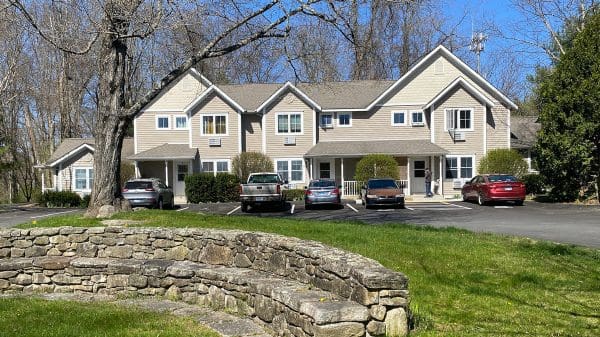KENT—The Planning and Zoning Commission, which has been updating local regulations to help implement the 2022 Plan of Conservation and Development, held a community forum Wednesday night to discuss two remaining issues.
Some of the regulation changes already adopted addressed parking requirements, senior living developments, camps, special events and accessory dwelling units. Wednesday, the commission wanted to talk about its comprehensive revision of the Subdivision Regulations and revisions to the Conservation Development regulations.
A number of residents attended the Zoom session, which was led by town planner Glenn Chalmers, president of Plaimetrics in Avon. Chalmers informed those attending that the meeting was purely informational and that a public hearing on the revised regulations will be held Jan. 18. “When we close the hearing, the Planning and Zoning Commission will consider the comments made and decide how to proceed,” Chalmers said.
The PZC has a February deadline before a six-month moratorium on subdivisions runs out.
Justin Potter inquired about the provisions for open space in subdivisions. The revised regulations call for at least 15 percent of the development to be conserved using the same proportionality of land types as entire parcel. “Sometimes the open space preserved is the least useful,” explained Chalmers. “The Commission wanted a proportionality provision. So, if 40 percent of the parcel is wetlands or steep slope while the rest is developable, the 15 percent designated for open space, has to have the same proportionality. The basic requirement was to try to create diversity of landscape.”
Potter said that a key requirement would be to have a qualified professional assess the full parcel and the open space configuration. “Keeping open space contiguous would be the best thing to do,” he said.
Chalmers said the regulations have a “broad spectrum of requirements,” but at present assessment by a conservation biologist is not included. “It should be included to provide an array of options for the developer to consider,” he agreed. “This is a different way of thinking than we have done in the past. The more expertise we can get into the conversation, the better off we will be.”
In response to a question from Chris Harrington as to whether this would add cost for the developer, Chalmers said that any qualified consultant could be an advisor. “This is not a mandate, but we would add it as an option. If an engineer does it, as long as he does a good job, it would be alright. If the work is not adequate, you [the PZC] can have it done and charge the applicant. My experience is, it produces a much more thoughtful plan. We’re talking about the totality of the project, and you will have a more well-rounded conversation based on the land.”
Potter suggested that it could be helpful to developer in heading off challenges.
Chalmers added that the regulations “encourage people to do analysis and settle in on what land telling us.”
Shelby Green proposed that the regulations should go beyond looking at the physical aspects of a subdivision to “how it would affect us as a community.”
Sarah Chase, newly elected to the Planning and Zoning Commission, asked how extensive the changes are from the last review in 1995. Chalmers said that would require a line-by-line comparison but concluded, “The new regulations pick up on a lot of best-management practices since 1995.” He suggested that “30 years is a tad longer than necessary” for a review even though the economic collapse of the early 2000s shut down subdivisions for a while. He suggested a review every five to 10 years.
Anne McAndrew asked if anyone is exempt from the regulations, such as nonprofits. Chalmers explained that a subdivision plan is required when a parcel of record is divided for the third time, unless it is for conservation, agriculture or municipal purposes. Potter added that affordable housing is also excluded.
Chalmers responded, “I was not aware of that” and said he would clarify it before the PZC meets December 14.
Chase asked about appeals of the subdivision regulations. Chalmers said subdivision regulations are a planning function separate from zoning. “Someone could come with in with a plan that because of the affordability threshold would not have to comply with some zoning regulations,” he said, “but they would still have to ensure the buildabilty of the lots.”






























